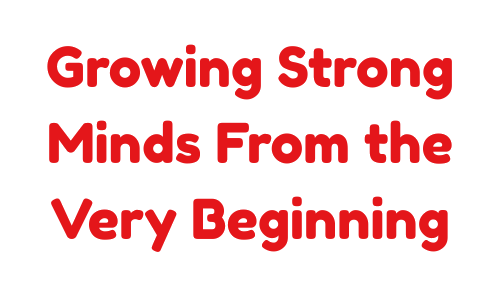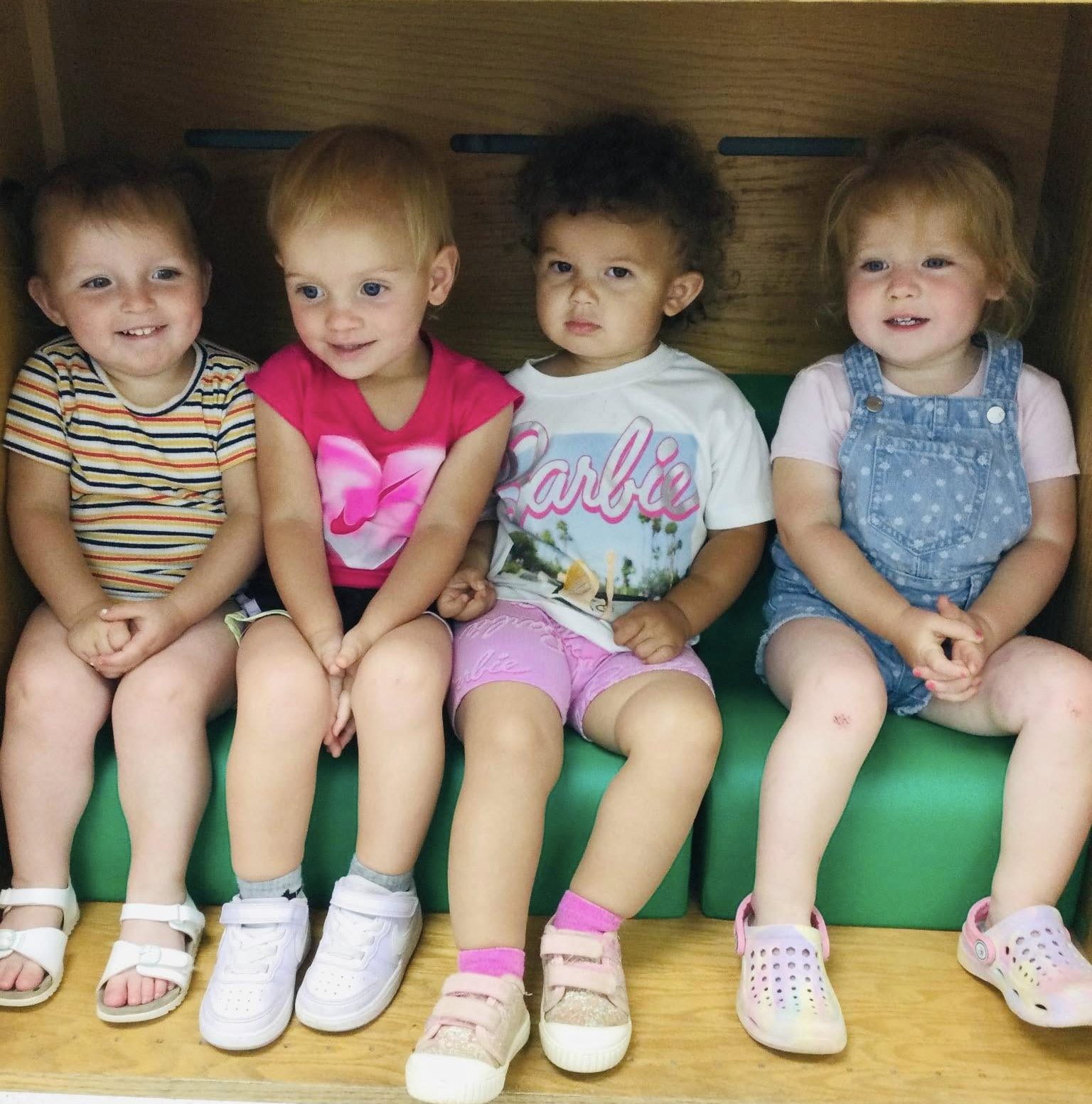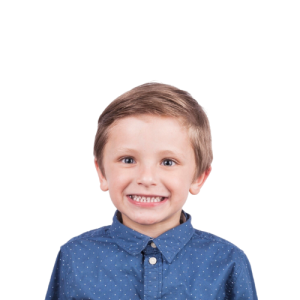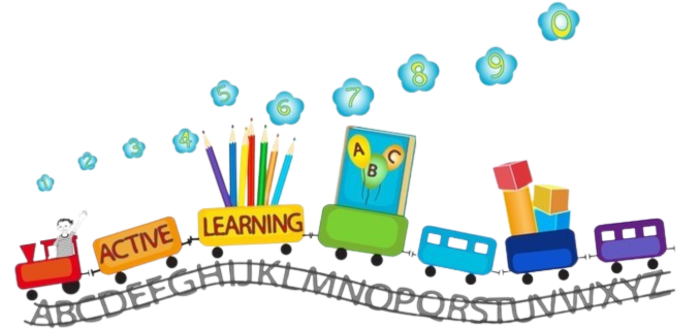
The early years are the time to build a strong foundation in all developmental areas. Meeting specific milestones in all five domains of development and learning helps preschoolers establish behaviors and skills that will contribute to their success.
The preschool years are a crucial time for building a strong foundation in early childhood development. These formative years are the ideal opportunity for children to develop essential skills across various domains, all of which are equally important.
There are five domains of preschool development. From The Beginning creates thoughtful and intentional lesson plans within these developmental areas will ensure that your preschoolers get a well-rounded education, as well as help them with the most important developmental skills.
Cognitive Development
Physical Development
Social / Emotional Development
Language Development
Self-Help / Adaptive Development
Preschool developmental skills cannot be ignored because they lay the foundation for future learning and social interactions, ensuring well-rounded growth across essential life skills.
Play is an elusive concept, and it’s an essential part of life, not just childhood. However, it is critical for proper development during the formative years. Even the cognitive development of preschoolers happens most readily through play-based activities, which makes teaching in all the preschool developmental areas all the more important.
Play encourages all areas of proper development, from cognitive and physical to social and emotional. Here are some facts about the benefits of play:
Creating simple play ideas for preschoolers is remarkably easy, often using everyday materials found at home. These activities seamlessly integrate educational concepts, such as counting, color recognition, and fine motor skills development.
By engaging in purposeful play, children not only have fun but also increase their cognitive and physical abilities.
The five developmental domains in early childhood are physical, cognitive, social-emotional, language, and adaptive development.
Understanding these five developmental domains is crucial for parents and educators to support a child’s growth holistically, ensuring they are well-rounded and prepared for future learning experiences.
Early intervention in any of these areas can significantly impact a child’s overall development and success.
Cognitive development refers to the skills preschoolers acquire in learning and thinking. It is not remembering facts and trivia.
Cognitive skills include:
Preschoolers are full of questions. They love to collect things. Preschoolers also enjoy repeating the same activity over and over and appreciate hearing the same story told multiple times. They love taking risks and trying new things.
When to Be Concerned About Your Preschooler’s Cognitive Development
It’s important to monitor your preschooler’s cognitive development and be aware of any signs of delays, such as difficulty with language, memory, or problem-solving tasks compared to peers.
If you notice your child struggling significantly in these areas, or if they seem to lose skills they previously mastered, it may be time to consult with a pediatrician or early childhood developmental specialist. Early intervention is key.
Physical development skills are an essential part of any early learning program. They include skills like:
Muscle control, balance, and coordination (climbing ladders, opening doors, and putting on coats)
Social and emotional development for preschoolers covers a wide range of skills, such as:
Children are naturally social and curious. They are also packed full of big emotions and need help navigating their feelings, learning how to react, and responding appropriately in social situations. Social skills can be taught, and doing so will help children develop the strategies and coping skills they need to navigate social situations effectively.
It’s an integral part of growing up around other kids. It is also under this domain that children need to feel safe, nurtured, respected, and loved.
Preschoolers are learning to recognize and express their emotions. They start to understand feelings like empathy and how their actions affect others. Caregivers can support them by providing a loving environment, encouraging kids to express their feelings, and teaching them how to manage emotions positively.
Pediatric physical therapy is a specialized branch of healthcare focused on helping children develop, recover, and improve their physical abilities through tailored therapeutic Pediatric physical therapy is a specialized branch of healthcare focused on helping children develop, recover, and improve their physical abilities through tailored therapeutic
Pediatric occupational therapy is a branch of occupational therapy that focuses on helping children with various physical, cognitive, and developmental disabilities or delays to perform daily activities and tasks. It helps children gain independence while also strengthening the development of fine motor skills, sensory-motor skills, and visual motor skills that children need to function and socialize
For kids, occupational therapy helps those who are having difficulty with the normal daily “occupations” of childhood. This includes play skills, self-help skills, self-care activities, social-emotional development and learning.
Sensory integration treatments provide challenging therapeutic activities with an enriched sensory experience to maximize your child’s ability to participate in daily life activities.
Who benefits from Occupational Therapy Services?
Children might require occupational therapy for a variety of reasons, including but not limited to:
Poor motor planning new activities
Comprehensive Assessment Includes
Therapeutic Intervention
Does MY CHILD NEED OCCUPATIONAL THERAPY?
Your child may be recommended occupational therapy if they are showing signs of developmental delay in physical, social, emotional or mental domains. They may also benefit from occupational therapy to improve their handwriting, attention, or self-regulation.
Although each case is unique, occupational therapy is usually recommended to help your child become more independent.
Following the evaluation process, a precise treatment plan is then developed. Occupational Therapy helps children develop sensory awareness, strength, and coordination needed for self-care and early learning skills. Pediatric Occupational Therapy will help your child excel in their daily life as they play, attend school, and engage in social interactions as they grow into adulthood.
The goal of pediatric occupational therapy (OT) is to help children achieve independence and enhance their quality of life by addressing their unique needs and challenges.
Pediatric occupational therapists (OTs) utilize a range of techniques and tools, including sensory integration therapy, play-based therapy, fine motor skill development, and adaptive equipment, to help children achieve their goals.
Who do pediatric occupational therapy providers work with?
Some of the conditions that pediatric OTs may treat include autism spectrum disorders, cerebral palsy, developmental delays, Down syndrome, sensory processing disorders, and more. Pediatric occupational therapists (OTs) also work closely with those who support their clients, including parents, caregivers, teachers, and other healthcare professionals, to create individualized treatment plans that address the child’s specific needs and goals.
In addition to helping children with physical and developmental disabilities, pediatric occupational therapists (OTs) also assist with emotional and behavioral issues that may affect their ability to function and participate in daily activities.
Each location has a Licensed Registered Nurse on site to provide Nursing Services to children with medical issues or children who require specialized care.
Treatment Includes:
What Role Do Nurses Play in Early Intervention Programs?
Nurses are at the forefront of our developmental programs. Their responsibilities include:
Monitoring and following up with patients to ensure adherence to care plans.
Pediatric physical therapy is a specialized branch of healthcare focused on helping children develop, recover, and improve their physical abilities through tailored therapeutic
interventions. It addresses various conditions such as cerebral palsy, spina bifida, down syndrome, and developmental delays.
Early intervention is often crucial for addressing developmental delays or congenital conditions. Our therapists are trained to work with children of all ages.
Pediatric physical therapy aims to enhance motor skills, strength, and mobility in children from infancy through adolescence. It addresses various conditions that may affect a child’s physical development, including developmental delays, neuromuscular disorders, sports injuries, and other physical challenges. The primary goals include:
Methods of Treatment
Pediatric physical therapists use a variety of techniques and approaches tailored to each child’s needs. Common methods include:
Pediatric occupational therapy is a branch of occupational therapy that focuses on helping children with various physical, cognitive, and developmental disabilities or delays to
perform daily activities and tasks. It helps children gain independence while also strengthening the development of fine motor skills, sensory-motor skills, and visual motor skills that children need to function and socialize
For kids, occupational therapy helps those who are having difficulty with the normal daily “occupations” of childhood. This includes play skills, self-help skills, self-care activities, social-emotional development and learning.
Sensory integration treatments provide challenging therapeutic activities with an enriched sensory experience to maximize your child’s ability to participate in daily life activities.
Who benefits from Occupational Therapy Services?
Children might require occupational therapy for a variety of reasons, including but not limited to:
Poor motor planning new activities
Comprehensive Assessment Includes
Therapeutic Intervention
Does MY CHILD NEED OCCUPATIONAL THERAPY?
Your child may be recommended occupational therapy if they are showing signs of developmental delay in physical, social, emotional or mental domains. They may also benefit from occupational therapy to improve their handwriting, attention, or self-regulation.
Although each case is unique, occupational therapy is usually recommended to help your child become more independent.
Following the evaluation process, a precise treatment plan is then developed. Occupational Therapy helps children develop sensory awareness, strength, and coordination needed for self-care and early learning skills. Pediatric Occupational Therapy will help your child excel in their daily life as they play, attend school, and engage in social interactions as they grow into adulthood.
The goal of pediatric occupational therapy (OT) is to help children achieve independence and enhance their quality of life by addressing their unique needs and challenges.
Pediatric occupational therapists (OTs) utilize a range of techniques and tools, including sensory integration therapy, play-based therapy, fine motor skill development, and adaptive equipment, to help children achieve their goals.
Who do pediatric occupational therapy providers work with?
Some of the conditions that pediatric OTs may treat include autism spectrum disorders, cerebral palsy, developmental delays, Down syndrome, sensory processing disorders, and more. Pediatric occupational therapists (OTs) also work closely with those who support their clients, including parents, caregivers, teachers, and other healthcare professionals, to create individualized treatment plans that address the child’s specific needs and goals.
In addition to helping children with physical and developmental disabilities, pediatric occupational therapists (OTs) also assist with emotional and behavioral issues that may affect their ability to function and participate in daily activities.
Each location has a Licensed Registered Nurse on site to provide Nursing Services to children with medical issues or children who require specialized care.
Treatment Includes:
What Role Do Nurses Play in Early Intervention Programs?
Nurses are at the forefront of our developmental programs. Their responsibilities include:
Monitoring and following up with patients to ensure adherence to care plans.
Sensory processing disorder is when our brains have difficulties receiving and responding to sensory information from our senses. This can cause a child to have difficulty with their daily activities.
Sensory processing disorder can lead to behavioral issues and can affect a child’s development. The question that parents often ask me is whether their child will outgrow their sensory issues or if these issues will be lifelong.
Childhood sensory issues often begin to emerge around the ages of two to three years old.
Hypersensitivity. This is when the child in question is overly sensitive to common sensory situations. In these instances, the child will attempt to avoid these sensory situations that cause them sensitivity. This is also called sensory avoiding.
Effective communication is fundamental to a child’s development and overall well-being. Language and
communication skills are not only essential for expressing needs and desires but also for social interaction,
academic success, and building strong relationships. Pediatric speech therapy serves several crucial purposes:
Every child develops at their own pace, and it’s essential to remember that there is a wide range of “normal” in speech and language development. However, there are certain signs that may indicate a need for pediatric speech therapy:
Late Speech Milestones: If a child is significantly behind their peers in reaching speech and language milestones, it may be time to seek help. These milestones include babbling, saying their first words, and forming sentences.
Pediatric speech therapists are highly trained professionals who specialize in working with children to improve
their speech and language skills. Here are some key aspects of their role:
Parents and caregivers may wonder what a typical pediatric speech therapy session looks like. While each session is tailored to the child’s specific needs, here are some common elements:
While pediatric speech therapy is a crucial part of a child’s development, parents and caregivers also play a significant role in supporting their progress. Here are some tips for supporting your child’s speech and language development at home:
Pediatric speech therapy is a valuable resource for children who face speech and language challenges. It provides them with the tools and support they need to develop effective communication skills, boost their confidence, and thrive academically and socially. Parents and caregivers are essential partners in this journey, and by working together with pediatric speech therapists, children can achieve their full potential in speech and language development. Remember that seeking help early can make a significant difference in a child’s progress, so if you have concerns about your child’s speech and language development, don’t hesitate to reach out to one of our qualified pediatric speech therapist.
Before embarking on the pediatric speech therapy journey for your child, you will want to understand the typical stages of speech and language development.
Children’s speech and language development gradually unfolds as they age. Meeting the pediatric speech
and language milestones is the foundation for effective communication. Let’s take a closer look at these
early communication milestones:
After the expanding vocabulary stage, children continue to develop their language skills. Here are some of the key language milestones that children typically reach during the preschool and school- age years:
Preschool (3-5 years old)
School-age (6-11 years old)
Remember that all children develop at their own pace. There is a wide range of what is considered normal language development. However, if you are concerned about your child’s language skills, you should speak to your pediatrician or a speech-language pathologist. They can assess your child’s language skills and provide you with guidance and support.
Understanding the nuances of these disorders is pivotal in providing targeted and effective therapy. Here, we delve into the world of speech and language disorders, shedding light on common types and their characteristics:
Language Disorders
Language disorders encompass a broad spectrum of challenges in understanding and using language
effectively. There are two primary types of language disorders:
Language difficulties often require comprehensive therapeutic strategies, including vocabulary-building
exercises, grammar drills, and other activities that enhance expressive and receptive language skills.
Articulation and phonological disorders are speech sound disorders that affect the way a child pronounces sounds. Children with articulation disorders may have difficulty producing certain sounds, substituting them with others, or distorting them altogether. For example, a child with an articulation disorder might say “wabbit” instead of “rabbit” or “thock” instead of “sock.”
Articulation disorders can have a significant impact on a child’s communication skills. They can make it difficult for children to be understood by others, leading to frustration and social isolation.
Addressing articulation disorders involves targeted exercises to help your child improve and refine their pronunciation, gradually achieving clarity in their speech.
Stuttering is a fluency disorder characterized by disruptions in the natural flow of speech. Children with fluency disorders may experience repetitions of sounds, syllables, or whole words. Prolongations of sounds and speech blocks, where the flow of speech is temporarily halted, are also common.
A fluency disorder can significantly impact a child’s confidence and communication. Stuttering therapy often involves techniques to improve fluency and strategies to manage speech-related anxiety.
Pragmatic language disorder (PLD) is a communication disorder affecting a person’s ability to use language in social contexts. People with PLD may have difficulty understanding and responding to social cues, using language for different purposes, and following the rules of conversation. For example, a person with PLD might have difficulty taking turns in a conversation, understanding the meaning of a joke, or knowing when to be polite or informal.
PLD can be caused by various factors, including, autism spectrum disorder (ASD), intellectual disabilities, neurological disorders, developmental delays, and environmental factors, such as trauma or neglect.
PLD can have a significant impact on a person’s life. It can make it difficult for people to form and maintain relationships, participate in social activities, and succeed in school and work.
Voice disorders pertain to challenges in a child’s voice quality, pitch, or loudness. Signs of voice disorders may include hoarseness, breathiness, or a strained voice quality.
Voice therapy aims to restore or improve the child’s voice quality, often involving exercises to promote vocal health and resonance.
Think about how you eat. You first have to get the food or drink to your mouth. You may use a fork, spoon, straw, or your hands. You have to open your mouth and take the food in. You close your lips to keep the food in your mouth. You then chew the food or move the liquid to get ready to swallow.
Children have to learn this process. They start by sucking and learn how to eat solid foods and drink from a ncup. Children will have some trouble at first. Drinks may spill from their mouths. They may push food back out or gag on new foods. This is normal and should go away. A child with a feeding disorder will keep having trouble. Some children will eat only certain foods, or they may take a long time to eat. These children may also have a feeding disorder.Some children also have swallowing problems, or dysphagia (dis-FAY-juh).
Swallowing happens in three stages, or phases. A child can have a problem in one or more of these phases. They include:
Signs of Feeding and Swallowing Disorders
Your child may have a feeding or swallowing problem if they:
Not every child has every sign listed here. Your child may show a few signs or many of them. Your child may be at risk for:
Causes of Feeding and Swallowing Disorders
There are many possible causes for feeding and swallowing problems, including:
Your child’s therapy journey begins with a critical step—the assessment. During the assessment process, the speech therapist will gain an understanding of your child’s unique communication profile:
Gathering Information: The speech therapist will collect information about your child’s language development history.
Conducting Evaluations: The speech therapist will use various assessments, including standardized tests, informal observations, and parent interviews.
Analyzing Findings: With data, speech-language pathologists analyze the assessment results. This critical phase lets them clearly understand your child’s communication strengths and challenges. Importantly, it enables them to determine if language and speech disorders exist and, if so, the extent of their impact on your child’s daily life.
Following the assessment, the speech-language pathologist collaborates closely with you, the parents, or
caregivers to develop a personalized treatment plan tailored to your child’s needs and goals. The following
will be included in the treatment plan:
Speech therapy offers numerous benefits for children with speech and language challenges. Here are some of the key advantages:
Understanding what happens during a typical speech therapy session can help ease any concerns you or your
child may have. Here’s what to expect:
As a parent, you play a vital role in your child’s speech therapy. Here are some tips to help you support your child’s progress:
→Be Patient
Improvement in speech therapy may take time, and some days may be more challenging than others. Be patient and celebrate even small achievements along the way.
→Practice at Home
Follow the speech therapist’s recommendations for home practice. Consistent practice can accelerate your child’s progress.
→Communicate Openly
Maintain open communication with your child’s therapist. Share any concerns or observations you have, and ask questions when needed.
→Create a Supportive Environment
Create a supportive and nurturing environment at home. Please encourage your child to communicate and express themselves without fear of judgment.
→Be a Role Model
Model clear and effective communication for your child. Speak, use correct grammar and certain sounds, and converse with them. Check and have a speech evaluation for the progress.
→Encourage Reading
Reading to your child and with your child is an excellent way to promote language development. Choose age- appropriate books and make reading a fun and interactive experience.
→Maintain a Positive Attitude
Maintain a positive attitude throughout the process. Your encouragement and optimism can significantly impact your child’s motivation and progress.
In addition to speech therapy sessions, parents can access various resources to support their child’s language and speech development. These resources include:
Effective communication is fundamental to a child’s development and overall well-being. Language and
communication skills are not only essential for expressing needs and desires but also for social interaction,
academic success, and building strong relationships. Pediatric speech therapy serves several crucial purposes:
Every child develops at their own pace, and it’s essential to remember that there is a wide range of “normal” in speech and language development. However, there are certain signs that may indicate a need for pediatric speech therapy:
Late Speech Milestones: If a child is significantly behind their peers in reaching speech and language milestones, it may be time to seek help. These milestones include babbling, saying their first words, and forming sentences.
Pediatric speech therapists are highly trained professionals who specialize in working with children to improve
their speech and language skills. Here are some key aspects of their role:
Parents and caregivers may wonder what a typical pediatric speech therapy session looks like. While each session is tailored to the child’s specific needs, here are some common elements:
While pediatric speech therapy is a crucial part of a child’s development, parents and caregivers also play a significant role in supporting their progress. Here are some tips for supporting your child’s speech and language development at home:
Pediatric speech therapy is a valuable resource for children who face speech and language challenges. It provides them with the tools and support they need to develop effective communication skills, boost their confidence, and thrive academically and socially. Parents and caregivers are essential partners in this journey, and by working together with pediatric speech therapists, children can achieve their full potential in speech and language development. Remember that seeking help early can make a significant difference in a child’s progress, so if you have concerns about your child’s speech and language development, don’t hesitate to reach out to one of our qualified pediatric speech therapist.
Before embarking on the pediatric speech therapy journey for your child, you will want to understand the typical stages of speech and language development.
Children’s speech and language development gradually unfolds as they age. Meeting the pediatric speech
and language milestones is the foundation for effective communication. Let’s take a closer look at these
early communication milestones:
After the expanding vocabulary stage, children continue to develop their language skills. Here are some of the key language milestones that children typically reach during the preschool and school- age years:
Preschool (3-5 years old)
School-age (6-11 years old)
Remember that all children develop at their own pace. There is a wide range of what is considered normal language development. However, if you are concerned about your child’s language skills, you should speak to your pediatrician or a speech-language pathologist. They can assess your child’s language skills and provide you with guidance and support.
Understanding the nuances of these disorders is pivotal in providing targeted and effective therapy. Here, we delve into the world of speech and language disorders, shedding light on common types and their characteristics:
Language Disorders
Language disorders encompass a broad spectrum of challenges in understanding and using language
effectively. There are two primary types of language disorders:
Language difficulties often require comprehensive therapeutic strategies, including vocabulary-building
exercises, grammar drills, and other activities that enhance expressive and receptive language skills.
Articulation and phonological disorders are speech sound disorders that affect the way a child pronounces sounds. Children with articulation disorders may have difficulty producing certain sounds, substituting them with others, or distorting them altogether. For example, a child with an articulation disorder might say “wabbit” instead of “rabbit” or “thock” instead of “sock.”
Articulation disorders can have a significant impact on a child’s communication skills. They can make it difficult for children to be understood by others, leading to frustration and social isolation.
Addressing articulation disorders involves targeted exercises to help your child improve and refine their pronunciation, gradually achieving clarity in their speech.
Stuttering is a fluency disorder characterized by disruptions in the natural flow of speech. Children with fluency disorders may experience repetitions of sounds, syllables, or whole words. Prolongations of sounds and speech blocks, where the flow of speech is temporarily halted, are also common.
A fluency disorder can significantly impact a child’s confidence and communication. Stuttering therapy often involves techniques to improve fluency and strategies to manage speech-related anxiety.
Pragmatic language disorder (PLD) is a communication disorder affecting a person’s ability to use language in social contexts. People with PLD may have difficulty understanding and responding to social cues, using language for different purposes, and following the rules of conversation. For example, a person with PLD might have difficulty taking turns in a conversation, understanding the meaning of a joke, or knowing when to be polite or informal.
PLD can be caused by various factors, including, autism spectrum disorder (ASD), intellectual disabilities, neurological disorders, developmental delays, and environmental factors, such as trauma or neglect.
PLD can have a significant impact on a person’s life. It can make it difficult for people to form and maintain relationships, participate in social activities, and succeed in school and work.
Voice disorders pertain to challenges in a child’s voice quality, pitch, or loudness. Signs of voice disorders may include hoarseness, breathiness, or a strained voice quality.
Voice therapy aims to restore or improve the child’s voice quality, often involving exercises to promote vocal health and resonance.
Think about how you eat. You first have to get the food or drink to your mouth. You may use a fork, spoon, straw, or your hands. You have to open your mouth and take the food in. You close your lips to keep the food in your mouth. You then chew the food or move the liquid to get ready to swallow.
Children have to learn this process. They start by sucking and learn how to eat solid foods and drink from a ncup. Children will have some trouble at first. Drinks may spill from their mouths. They may push food back out or gag on new foods. This is normal and should go away. A child with a feeding disorder will keep having trouble. Some children will eat only certain foods, or they may take a long time to eat. These children may also have a feeding disorder.Some children also have swallowing problems, or dysphagia (dis-FAY-juh).
Swallowing happens in three stages, or phases. A child can have a problem in one or more of these phases. They include:
Signs of Feeding and Swallowing Disorders
Your child may have a feeding or swallowing problem if they:
Not every child has every sign listed here. Your child may show a few signs or many of them. Your child may be at risk for:
Causes of Feeding and Swallowing Disorders
There are many possible causes for feeding and swallowing problems, including:
Your child’s therapy journey begins with a critical step—the assessment. During the assessment process, the speech therapist will gain an understanding of your child’s unique communication profile:
Gathering Information: The speech therapist will collect information about your child’s language development history.
Conducting Evaluations: The speech therapist will use various assessments, including standardized tests, informal observations, and parent interviews.
Analyzing Findings: With data, speech-language pathologists analyze the assessment results. This critical phase lets them clearly understand your child’s communication strengths and challenges. Importantly, it enables them to determine if language and speech disorders exist and, if so, the extent of their impact on your child’s daily life.
Following the assessment, the speech-language pathologist collaborates closely with you, the parents, or
caregivers to develop a personalized treatment plan tailored to your child’s needs and goals. The following
will be included in the treatment plan:
Speech therapy offers numerous benefits for children with speech and language challenges. Here are some of the key advantages:
Understanding what happens during a typical speech therapy session can help ease any concerns you or your
child may have. Here’s what to expect:
As a parent, you play a vital role in your child’s speech therapy. Here are some tips to help you support your child’s progress:
→Be Patient
Improvement in speech therapy may take time, and some days may be more challenging than others. Be patient and celebrate even small achievements along the way.
→Practice at Home
Follow the speech therapist’s recommendations for home practice. Consistent practice can accelerate your child’s progress.
→Communicate Openly
Maintain open communication with your child’s therapist. Share any concerns or observations you have, and ask questions when needed.
→Create a Supportive Environment
Create a supportive and nurturing environment at home. Please encourage your child to communicate and express themselves without fear of judgment.
→Be a Role Model
Model clear and effective communication for your child. Speak, use correct grammar and certain sounds, and converse with them. Check and have a speech evaluation for the progress.
→Encourage Reading
Reading to your child and with your child is an excellent way to promote language development. Choose age- appropriate books and make reading a fun and interactive experience.
→Maintain a Positive Attitude
Maintain a positive attitude throughout the process. Your encouragement and optimism can significantly impact your child’s motivation and progress.
In addition to speech therapy sessions, parents can access various resources to support their child’s language and speech development. These resources include:

This dynamic classroom supports growing independence, language development, and motor skills. Children explore the world around them through hands-on activities, creative play, and interactive learning experiences.
A warm and nurturing environment where toddlers begin their journey through guided play, sensory activities, and foundational social-emotional learning. We focus on building trust, routines, and early communication skills.
Our preschool program prepares children for kindergarten with a focus on early literacy, problem-solving, and social development. Through structured play, discovery-based lessons, and individualized support, children build the confidence and skills needed for future academic success.

We prioritize the unique needs, strengths, and potential of every child, creating individualized paths for growth and development.

Our highly trained team is committed to providing evidence-based instruction and therapeutic services that meet the highest professional standards.

We celebrate diversity and provide an inclusive environment where all children feel valued, respected, and supported.

We maintain transparency, ethical practices, and a strong sense of responsibility in every aspect of our work—from teaching to therapy to administration.
